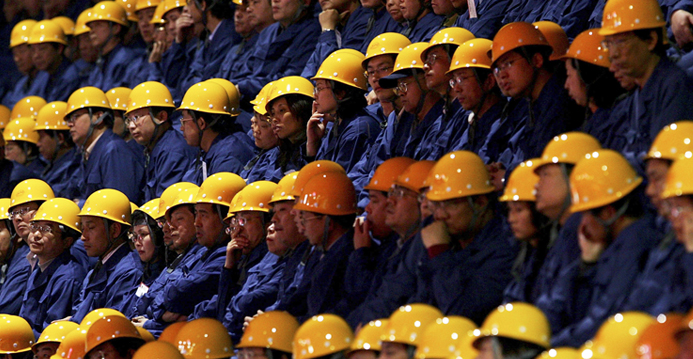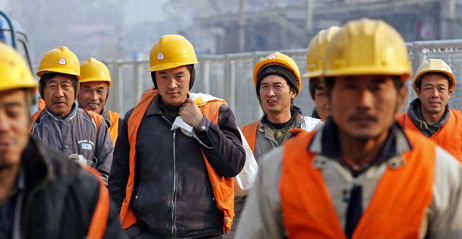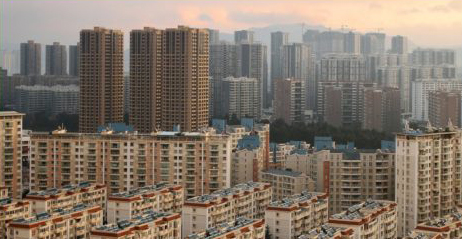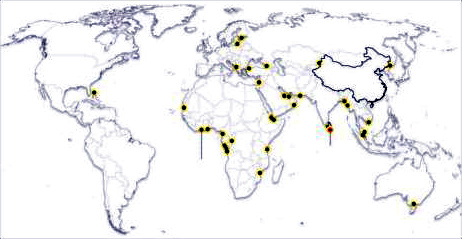by Perry Diaz

Typically, when a foreign power invades another country, they’re met with resistance that could lead to war. But something unusual is happening in the Philippines. Thousands of Chinese workers are invading the country and taking jobs away from Filipinos. However, Malacañang is not worried about it. In fact, they welcome it.
Recently, the Senate Labor, Employment, and Human Resources Committee conducted an inquiry on the influx of foreign workers in the Philippines. It was revealed that the Department of Labor and Employment (DOLE) issued almost 52,000 alien employment permits for Chinese workers. According to DOLE officials, more than 150,000 Chinese enter the country using tourist visas before getting short-term permits to work for online gaming firms. The Senate committee also found out that more than 119,000 tourists ━ mostly Chinese ━ were able to avoid Philippine labor regulations. Current estimates place 200,000 to 400,000 Chinese are working in Philippine Offshore Gaming Operations (POGOs), which were established after President Rodrigo Duterte took over the government in 2016. Currently, there are around 50 POGOs in operation today, mostly operated by Chinese nationals.
But what’s causing the ease for foreigners to acquire work permits is a glaring loophole in the system where any of the 3.12 million Chinese “tourists” registered at the Bureau of Immigration (BOI) can convert their tourist visas into working visas as long as they obtain an Alien Employment Permit (AEP). And while waiting for their AEP, they are issued a Provisional Work Permit (PWP). So, in a practical sense, any tourist admitted to the country can stay and work without too much of a hassle.
As one resident in Metro Manila had observed: “The Chinese have invaded our islands in the West Philippine Sea and now they’re in my condo! It’s a home invasion!”
“Build, Build, Build”

Well, POGOs are just one industry that is employing a large number of Chinese nationals. The bigger industry, which is growing fast, is the “Build, Build, Build” infrastructure project of President Duterte, which is estimated at US$180 billion. What we’re talking about here are construction workers ━ tens of thousands ━ employed by Chinese state-owned contractors.
All the contracts that the Philippines had agreed to undertake with Chinese bank loan financing, the following conditions are included: No bidding process, project to be done by one of China’s state-owned companies, the workers to be Chinese nationals, cost overruns to be renegotiated (that usually ends in higher interest rates), and others including asset-based lending practices.
The Chinese contractors who got the no-bid contracts hire Chinese nationals, transport them to construction sites, provide housing and meals, and pay them according to China’s pay standards, which are much higher than Philippine pay standards. In essence, Duterte’s infrastructure project does not increase the country’s construction employment opportunities.
There were reports that the Chinese workers are paid on the average P3,000 a day while Filipino construction workers are paid on the average P600 a day. The disparity is outrageous.
One has to remember that the Chinese construction companies will only hire Chinese construction workers as per contract condition. The pay is already built-in to the cost of construction. But here’s the sad part: The Philippine government is paying for the cost of construction plus whatever profit, overhead, housing allowances for the Chinese workers, and other costs are added to the total contract amount. Would it cost less to hire Filipino construction workers? Absolutely. But then these are the conditions the Chinese government imposed on the countries that were enticed into infrastructure projects with high-interest predatory loans from Chinese banks chosen by the Chinese government.
To entice Chinese workers to work in the Philippines, they have to be paid comparably or more than what they earn in China. After all, it didn’t matter to the Chinese construction companies because the extra cost of labor would be added to the total construction cost, which is paid by the host country, the Philippines.
But what’s happening to Chinese construction projects in the Philippines is also happening in all the countries where China is building infrastructure projects, including 35 seaports around the world. To date, 16 countries are vulnerable to China’s “debt- trap diplomacy” and economic coercion, including Vanuatu, the Philippines, Cambodia, Laos, Thailand, Malaysia, Sri Lanka, Tonga and Micronesia.
Ghost Cities

Three decades ago when China’s export market increased in volume, China embarked on a massive project; building high rise housing projects in newly created cities in anticipation of the growing middle class. Well, they over-built hundreds of them in what are now called “ghost cities.” Some say that they were built on purpose knowing that the growing middle would buy the hundreds of thousands of units built. Economic experts said that by expanding the construction industry, millions of construction jobs were created in the 1990s and 2000. It also caused China’s GDP to grow year after year. But like anything else, good things come to an end sooner or later. When the construction bubble finally burst, China had to find ways to put her construction and infrastructure workers in new projects. And with not enough domestic projects to work on, well…. where else would they go?
One Belt, One Road

When Chinese President Xi Jinping came to power, he dreamt of China becoming a superpower. But he couldn’t dislodge America as the world’s sole superpower. His “China Dream” took shape with his “Soft power diplomacy,” which is to gain economic power as a first step to becoming a superpower.
Xi then embarked on a “soft-power diplomacy” to sell China’s infrastructure projects to other countries. That’s when his “One Belt, One Road” (OBOR) Initiative came to fruition. He envisioned OBOR as the new Silk Road connecting Asia and the Western World by land and by sea. To date, China has built 35 seaports around the world creating sea routes ━ called “String of Pearls” ━ from the East and South China Seas to the Indian Ocean to Africa and Western Europe. Recently, China was trying to take over the Hanjin Philippines operations at Subic Bay.
Last November 2018, Xi visited the Philippines for the first time and sealed 29 infrastructure projects with Duterte. It opened doors for Chinese workers to come to the Philippines, since the “Build, Build, Build” projects were designed to be funded by Chinese banks and utilize Chinese contractors and workers only.
But things don’t seem to be what they should be. And the biggest problem that’s looming in the horizon is China’s OBOR Initiative itself. After pouring trillions of dollars into these grandiose infrastructure projects, participants are beginning to worry that OBOR is China’s thinly disguised strategy to expand her influence over countries from Asia to Western Europe. Instead of signing up to make deals with China, many countries are now beginning to stay away from doing business with her. But how about the 16 countries that have already been entrapped in China’s debt-trap diplomacy? Do they have a way out? Or would they suffer the fate of Sri Lanka, shackled in debt and her patrimony collateralized?
Could China’s miscalculation of her OBOR Initiative cause her construction industry to crash and open the floodgates to Chinese “invasion” of the Philippines and other countries?
